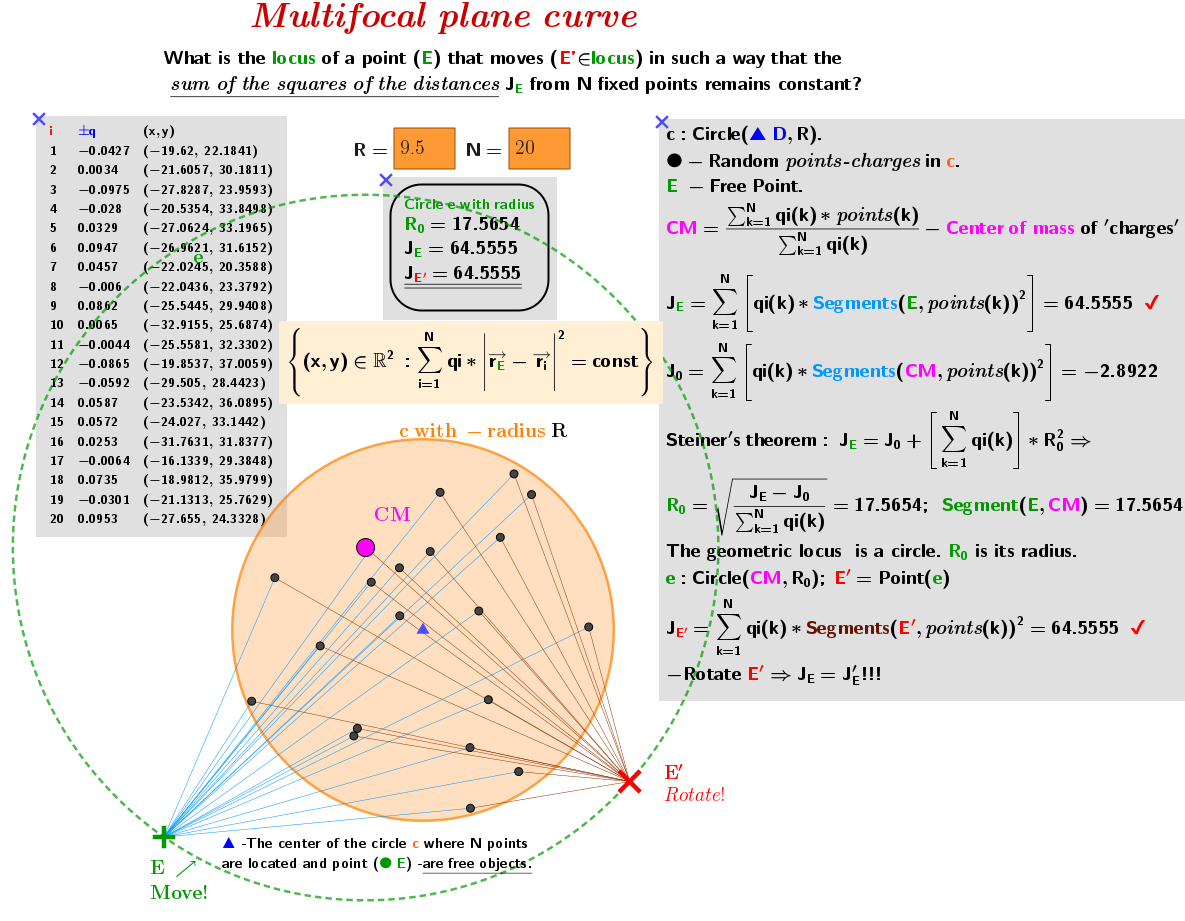[size=85] What is the Locus of a point [b][color=#38761d]E [/color][/b]that [b][color=#ff0000]E'[/color][/b] moves in such a way that it's sum of the squares of the distance (with weight factors) to [b]N [/b]fixed points remains constant?[br]Use Applet to visualize that in this case the [i][b]locus[/b][/i] of points is a [b][i][color=#38761d]circle[/color][/i][/b] (regardless of the number and location of [b]N[/b] points) with center at the center of "mass" ([color=#ff00ff]CM[/color][color=#333333])[/color] of the system of "charged" points and [b][i]radius [/i][/b][b][color=#38761d]R[sub]0[/sub][/color][/b] calculated by the given formula. [br]The algebraic sum of squares of distances: [b]qi*|x - xi|²[/b] is taken with weighting factors [b]qi [/b]by analogy with electrostatic charges.[br] *Click the Update button until a green circle appears in the plane of the screen.[/size]
[size=85]For a given set of [b]N[/b] points and a point [b][color=#38761d]E[/color][/b] such that the sum of the squares of the distances with weight factors (the blue [color=#1e84cc][b]segments[/b][/color]) is [b]J[sub][color=#38761d]E[/color][/sub],[/b] [b]check[/b] that [b]J[sub][color=#ff0000]E'[/color][/sub][/b]=[b]J[color=#38761d][sub]E[/sub][/color][/b] and remains unchanged for a moving point [b][color=#ff0000]E'[/color][/b] belonging to the [b]locus-[/b][color=#38761d][b]circle[/b][/color] (the brown [b][color=#980000]segments [/color][/b]connect[b][color=#ff0000] E'[/color][/b] to the [b]N[/b] points).[/size]

[b][url=https://en.wikipedia.org/wiki/Parallel_axis_theorem]Steiner's theorem[/url][/b]

